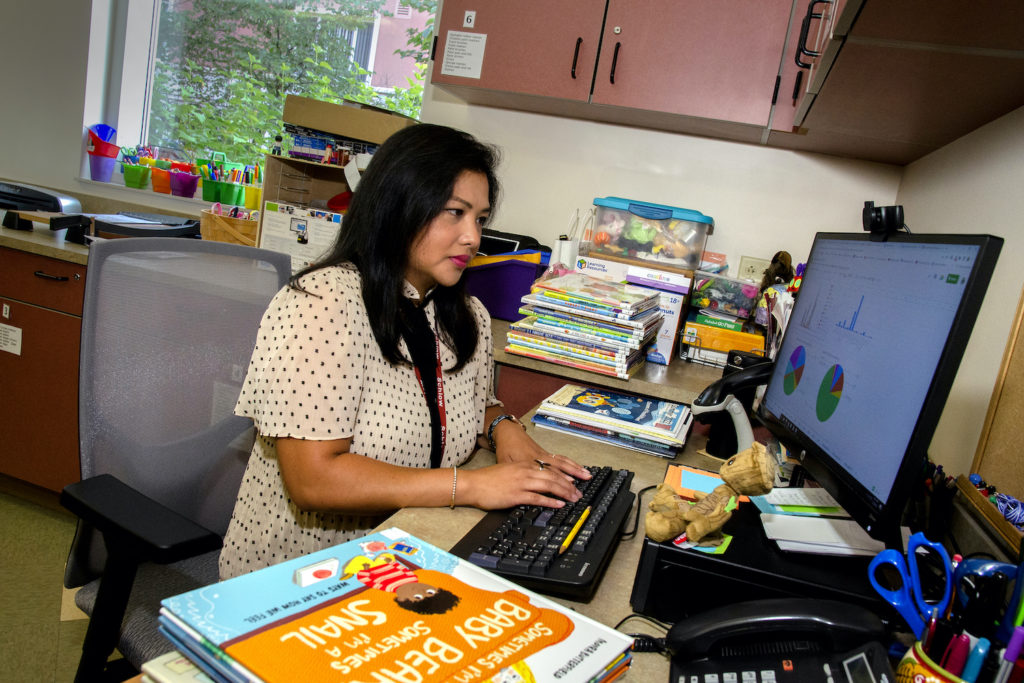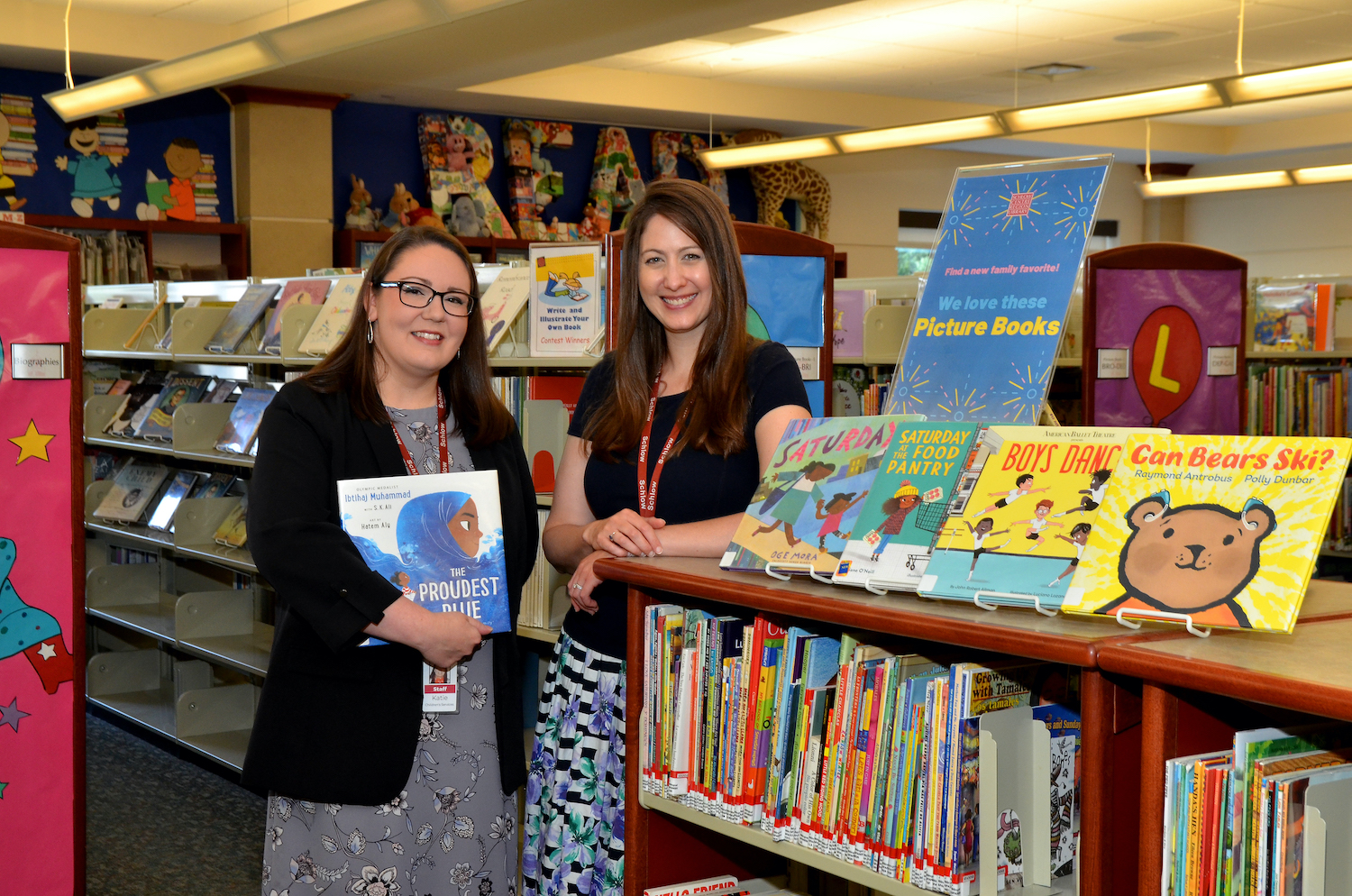As the head of children’s services at Schlow Centre Region Library, Paula Bannon believes representation matters.
“From a children’s librarian standpoint, you just want every kid to be able to come into the library and feel welcome, and like they matter, and to see themselves in books,” she says.
So when she started her position in 2017, she, along with children’s services librarian Katie Brennan, was particularly intrigued by a concept mentioned by author/educator/children’s literature expert Megan Dowd Lambert at a class they attended.
The concept that the author of The Whole Book Approach recommended was a diversity audit of children’s literature collections—basically, an inventory process in which libraries use hard data to assess how much diversity is reflected in the books on their shelves. Brennan had an opportunity to pick Lambert’s brain about the concept, and a plan was formed.
“It seemed like a good idea to take on something like this because we were getting to know the collection better, but also we wanted to better serve our community—because this is a very diverse community,” Bannon says.
With over 48,000 items and 14,000 picture books in the children’s collection already, an audit of the entire department would be far too overwhelming of an undertaking, so the librarians decided to narrow the focus to children’s picture books purchased in 2017 and onward.
Soon, Elaine Bayly, children’s services technician, was put on the case. Bayly had done some research for her master’s degree at the University of Wisconsin’s Cooperative Children’s Book Center, which is renowned for its work on diversity statistics, so her experience was a perfect fit.

Bayly carefully goes through each picture book the library adds to its collection—and at 700 to 800 picture books per year, that’s a lot. Then, using spreadsheets, she painstakingly tracks the diversity of main characters as well as authors and illustrators, looking at race, ethnicity, disabilities, LGBTQ identity, and gender.
According to Bannon, there are library vendors who offer an automated diversity auditing service, but she says these services are not only very expensive, but they are not as accurate.
“A lot of those are just based on the descriptions,” Bannon says. “I don’t think they actually hold the books in their hands or even look at them digitally. This seemed better.”
“It’s so valuable to have an actual person doing this,” Brennan agrees. “It’s a really nuanced process.”
As an example of that nuance, Bayly determines if a book has more than one protagonist and assesses the diversity of each. In addition, she says, some books, such as poetry books, might not have a protagonist, but she looks at the illustrations or the text for general multicultural themes.
Bayly has converted the results of her audit work from spreadsheets to graphs which clearly depict exactly what is going on in the collection.
Interestingly, one consistent statistic from year to year is that non-humans—animals, aliens, or anthropomorphized objects like trains or toys—make up the biggest category of main characters by a rather large margin.
With non-human characters taken out of the statistics, white main characters made up 54.1 percent of the children’s library’s 2017 collection, with Black main characters coming next at 13.7 percent, followed by Latinx/Hispanic characters at 8.5 percent. By 2021, those numbers had evened out significantly, with white main characters representing 27.9 percent of the collection, followed by general multicultural characters at 20 percent, Black at 17.8 percent, and Asian at 14.9 percent.
Looking at main characters by gender, in 2017, male protagonists dominated at 55.6 percent of the collection, followed by females at 32.4 percent, and ambiguous characters at 12 percent. By 2021, female protagonists took the lead, at 44.5 percent, compared to 41.5 percent male and 13.8 percent ambiguous main characters.
In 2017, white authors accounted for 86.7 percent of the collection, with Asian authors coming next at just 4.4 percent, followed by Latinx/Hispanic authors at 3.5 percent. In 2021, the number of white authors had dropped to 68.7 percent, followed by Asian authors at 12 percent and Black authors at 8.3 percent.
Finally, female authors shifted from 59.1 percent of the collection in 2017 to 68.6 percent in 2021.
While the data accumulated through this ongoing project has informed the library’s buying decisions, it also has allowed staff to be more intentional about the books they choose to display and to share during story times. It also helps them fulfill requests when they are asked for books featuring specific ethnicities or races.
Schlow Library shares its data with librarians in the State College Area School District and sometimes uses the information to obtain funding. Information is also compared with local census records in order to ensure that local demographics are reflected in the collection.
Overall, the statistics show that Schlow has made measurable progress in bringing more diversity to the children’s collection, and library patrons have noticed.
“Parents have been noticing. We have had many comments about it,” Bannon says. “We make a very big effort to also display diverse titles so families have an easier time finding those items and so kids can just walk up and see it, and not just have to search it out.”
While the changes partially reflect the intentional choices Brennan makes when selecting titles for the collection based on the audit’s findings, she also believes that in the children’s literature industry, “Books are changing. There is progress being made. But there is still a long way to go.”
Specifically, in addition to wanting to see more diverse authors, both Brennan and Bannon would like to see more books that offer “incidental diversity,” rather than books specifically addressing diversity issues.
“I think it’s important for kids to be able to see themselves in a book that doesn’t necessarily have to do with an issue or a piece of history or something like that—just kids being kids,” Brennan explains.
The importance of representation is not just limited to seeing oneself represented, Brennan adds.
“It’s also important for kids to see kids who are nothing like them so that they’re seeing the value in kids from other cultures, other ethnicities, other races. That’s important, too,” she says.
This project is expected to continue on an annual basis for the foreseeable future. T&G
Karen Walker is a freelance writer in State College.




